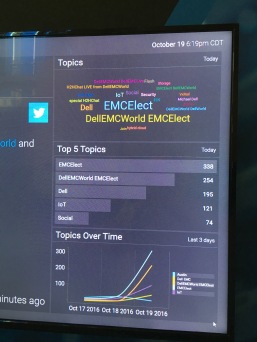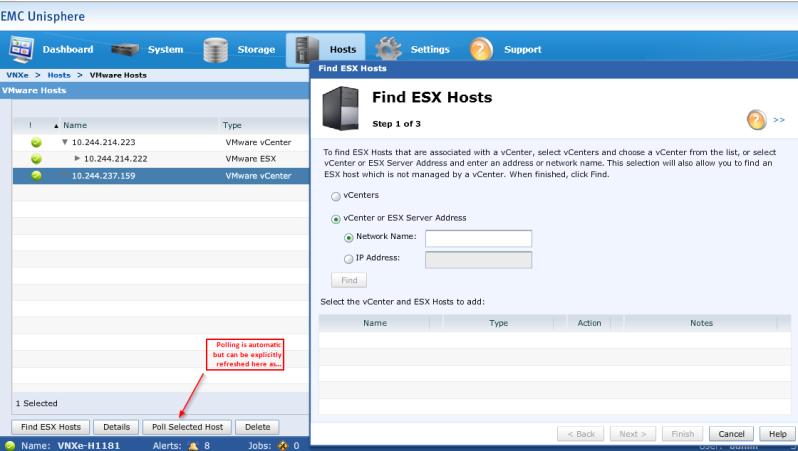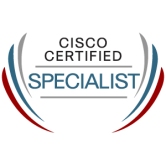Get a coffee or beverage in hand when reading this as it is a bit lengthy, covering my exam study approach and exam study resources that will hopefully help you be better prepared for the VCAP-DCV Deploy 2019 lab exam. The versions will change obviously but my approach for the Deploy lab exam won’t deviate an awful lot and also would hopefully be similar even for other tracks. I’m sure a lot is common sense to most folk but hopefully you can take something out of this post.
First thing I want to do is burst a bubble 🙂 Even if you are very well prepared it doesn’t guarantee you will pass! Your exam day technique is critical to success too. I covered this is another post here so ensure you heed those warnings/tips too.
I was delighted to pass this VCAP-DCV Deploy 2019 lab exam last week. Having the two VCAPs for DCV was something I was targeting for a while. Having both Advanced Design and Deployment skills are key for any VCDX so having both exams as pre-reqs for VCIX is critical IMO.
My role in Asystec as an SDDC Architect (blend of SE and PS Consultant) lends itself to more design than deployment so I found the Design VCAP easier to achieve than the Deploy. This differs depending on your role, experience and amount of time you have available either at work or at home to spend lab-ing topics out for (brain) muscle memory. Getting sustained hands on across the wide areas of the footprint was a challenge with a busy job and a busy family life. I’ve taken to putting these thoughts down in a blog post with the aim to help the community and colleagues at work looking to tackle a VMware Advanced Certification deployment exam.
Exam Study Approach
After reflecting on the different building blocks to being prepared as you can be for exam, i’d frame it as follows;

VCAP-DCV Deploy 2019 Study Approach
Understand Exam Scope, Format and Venue
- Download the Blueprint and ensure you understand all areas that will be examined. These are the areas that you will be researching, practicing configuring, deploying or troubleshooting. You will not get asked all areas of the blueprint in the exam but the questions are pooled so unfortunately no shortcuts in that you will need to cover everything.
- Ensure you know the format. How many questions, time allocated and passing score. You will need to work out how many minutes to spend on each question to ensure you are not losing time by spending too much time on one question. Also within the format you need to determine the lab environment exam set-up. The Hands-On Lab style is the exam lab you are provided. Get familiar with this in your studies (especially if you are using your own lab and not HOL for your lab environment. This includes adjusting to the right resolution and zooming out the browser to be between 70-80%. See links below for details.
- For the Venue, Pick the venue that suits for your booking to make it as simple as possible to attend. Then get the contact details and phone them up close to your booking to ensure there are no problems with the lab environments before burning the midnight oil the week to no avail. For deployment exams the ask of the exam centre is heightened regarding equipment, latency etc. and I wish someone told me to check in advance.
Links:
Exam Format
https://www.vmware.com/education-services/certification/vcap-dcv-deploy-2018-exam.html
Exam Interface
Prepare Lab Environment
- Given the nature of a deployment lab exam you will need a practice lab to exercise all the skills against all the areas being tested. I built a virtual vSAN lab (links below to help) on a standalone host that had two sites with a cluster of 4 vESXi Hosts in each site. There was one vCenter in each site with external PSC. I then revisited later to deploy in linked mode as well as re-pointing vCenter PSC. It did me fine but you can get as sophisticated as you like here depending on your budget. But ensure the virtual lab represents the exam lab set-up as best you know it. All storage was on the cards to be examined so as well as deploying the vSAN clusters I also deployed a Unity VSA to cover iSCSI and vVOL storage areas. One clear differentiation to using your own lab versus the HOL is that for your own lab you have to install and configure the hosts and multiple clusters which gets you started on Building your core foundation skills which by proxy tackles areas of the blueprint proper.
- You could use hands on lab and I did extensively towards the end as a new network is being deployed at work with my access a temporary casualty. The VMware hands on labs are a fantastic free resource with environments and setups to chose from depending on what you are trying to practice. The active vSphere version for 2019 and 2020 labs is 6.7 but as the current VCAP is 6.5 use the Web Client to perform tasks not vSphere Client as the exam is based on webclient unfortunately. Also of the advanced networking items are located in different places and this caught me out come exam time.
Links:
Lab Related
https://www.altaro.com/vmware/deploying-nested-esxi-is-easier-than-ever-before/ https://www.altaro.com/vmware/how-to-setup-vsan-using-a-nested-environment/ https://webinsightlab.com/freebie/free-lightweight-linux-distributions/ https://www.vladan.fr/top-three-lightweight-linux-vms-vmware/
HOLs
HOL-2011-01-SDC – VMware vSphere – Getting Started
HOL-2011-02-SDC – VMware vSphere – Advanced Topics
HOL-2010-01-SDC – Virtualization 101: Introduction to vSphere
HOL-1901-02-CMP Optimize Performance and Assess vSphere Configuration and Compliance with vRealize Operations
Unity VSA Install and Config
https://www.emc.com/collateral/TechnicalDocument/docu69316.pdf
https://www.dellemc.com/resources/en-us/asset/white-papers/products/storage/h15092-dell_emc_unityvsa.pdf
Configuring VVols
https://www.emc.com/dam/uwaem/documentation/unity-p-vvols-config.pdf http://www.enterprisedaddy.com/2017/11/vvols-emc-unityvsa/
https://www.youtube.com/watch?v=1gCsYbIFHOQ
Book The Exam
- Now that you have reviewed and analysed the blueprint determining areas into categories requiring low, medium and high amount of attention in the lab you will have an estimate on how long is realistically needed to prepare. Book the exam to give you a target date to aim for so you can build a schedule around work and home life commitments.
- Be realistic but don’t do what I did and keep pushing it out trying to cover every item in great detail. Give it a go and don’t be afraid to fail. You will get a feel for the exam timing, content and areas of weakness. Of course there are budget constraints for more than 1 attempt for some people so trade off against that potential constraint. If this is a factor and you are attending VMworld the exams are normally 50% cheaper to take during the show.
Links:
Exam Booking
https://mylearn.vmware.com/api/?mL_method=sso&h=1622&target=PearsonVue&p=viewAppointmentActivity
Collate Resources to aid Lab Execution
- Start a Onenote page/workbook to put all your resources in one place. Who knows maybe this post may make the cut LOL
- Leverage Community Study guides if available. I used VCAP 6 Study Guides to gauge breath and depth other successful people went to (thanks Kyle Jenner and Matt Callaway) but you will need to check for current version. 6.5 is the only available deploy exam at time of writing. They are a guide but are not exhaustive and will mainly help with the next section which is building a rock solid foundation of all areas of the blueprint but you will need to use these core skills and advance to more scenario based practice for the exam itself.
- Become very familiar with navigating official VMware documents. These will be available in the exam but open in chrome browser individually and not in Acrobat reader. Therefore it is not possible to search across multiple or all docs. You will need to know which VMware guide covers which feature or blueprint area in order to access the feature support quickly in the exam in order for them to be any benefit. This could save your bacon in the exam if you are a pro here.
- Use the PDF Lab Guides for VMware HOL as quick reference resources. I used this extensively. You can download the PDF for offline viewing as well which is really great for practicing or executing different blueprint features. You can launch labs and get manuals for 2020 and 2019. You can also go back to previous years for the pdf /html manual only.
Links:
Study Guides
http://www.vjenner.com/vcap6-dcv-deployment-study-guide/
http://vcallaway.com/vcap6-dcv-deploy-study-guide/
Official VMware Documentation
https://docs.vmware.com/en/VMware-vSphere/index.html
HOL PDF Lab Guides
http://docs.hol.vmware.com/catalog/
Practice Areas of Blueprint in the Lab
- At this point you need to roll up the sleeves and, using the resources you have collected up to now, practice and execute each area of the blueprint. All areas will not be examined but on the day you do not know what areas will be drawn out to be asked but you need a firm foundation in all areas. Depending on your role and experience the time taken to achieve this varies.
- Two methods I used to accelerate this phase was;
- Leverage the study resources you collated to get through this as swiftly as possible but there are no massive quick wins here because if you don’t have the hands on experience you have to GO GET IT! If your day job means you already have the majority of the skills then you may move to the next section quicker than I did 😉
Links:
VMware vSphere Feature Walk-through
https://vspherecentral.vmware.com/
https://featurewalkthrough.vmware.com/t/vsphere-6-5/
HOL PDF Lab Guides
http://docs.hol.vmware.com/catalog/
Challenge yourself in the Lab
- Once you have mastered the basics, and by that I mean you have implemented all areas of the blueprint either in your home lab or using the VMware HOL, you will need to move to scenario based learning. You need to move beyond being able to just configure or deploy a feature. You need to understand what is needed in order to be able to deploy/config said feature. A simplified example to get the point across could be to move VMs from one host to another in the same cluster. vMotion fails when you attempt it but when you dig deeper the reason for this is vMotion traffic is not selected on the ESXi mgmt vmkernel port. Tick the traffic on problem host and retry with success.
- To address this, apart from researching about the pre-reqs and dependencies for features, I used two resources to help me up-skill. Exam Simulators and Challenge labs helped here. See links sections for details.
- One other way if you have a colleague or friend also preparing could be to break your friends lab in a certain way then get him to complete a task depending on the item they mis-configured.
Links:
Exam Simulators
Thanks Joshua Andrews http://sostechblog.com/vcap6-dcv-deploy-practice/
Thanks Graham barker http://virtualg.uk/vcap6-dcv-deploy-exam-simulator-free/
Thanks Jorluis Perales https://www.jortechnologies.com/vcap-dcv-deploy-hol-based-simulator-free/
Thanks Ricardo Conzatti http://solutions4crowds.com.br/vcap-simulator/ Note: I did not get to take this one as getting 3 hours concurrent was not possible but in hindsight I should have to match exam environment for 3 hr exam.
Challenge Labs
HOL-1804-02-CHG vSphere 6.5 Challenge Lab
HOL-1808-02-CHG vSAN 6.6.1 Challenge Lab
Note: As per the Study Approach diagram depending on your level of experience etc you may end up going back to basics with a couple of topics after attempting to troubleshoot an area.
Wrap-Up
In short this exam is a hands on lab exam so if you have over 3 years hands on experience and if your job is a vAdmin then your preparation time will be lessened considerably. Book and sit the exam. See what the delta in Knowledge is if you do not pass and then target those areas. If VMware administration is not part of your daily role then you will get more value from this post. Its a tough but fair exam. Good luck with your preparations!
As always the usual Disclaimer













